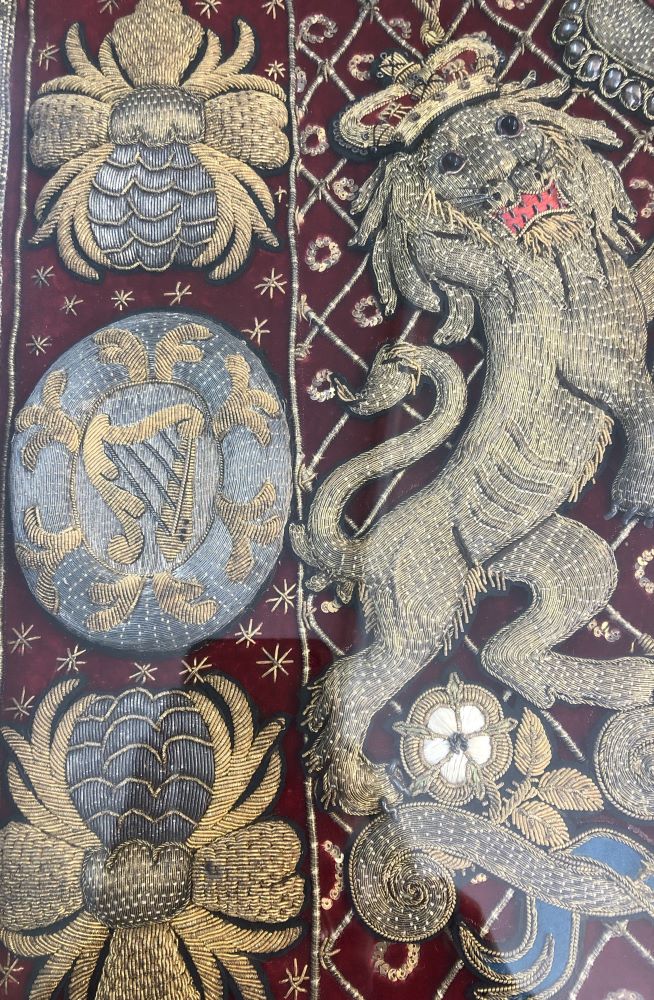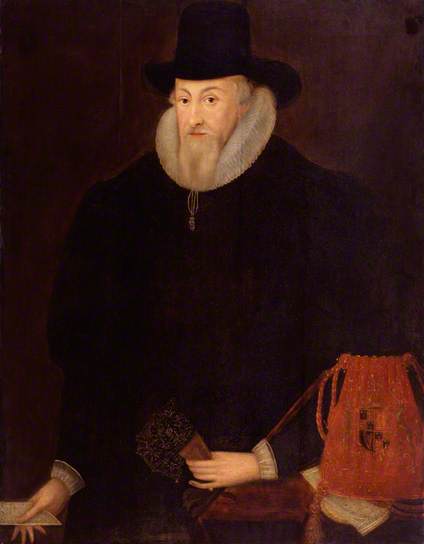I could probably write another three posts about my visit to the Cleveland Museum of Art but for now I’ll wrap up with the Chancellor’s Burse for George III. This elaborately embroidered velvet bag in the CMA collection has led conservator Robin Hanson and art historian Dr. Holly Witchey on a quest to locate every Chancellor’s burse, English and Irish, that is still in existence wherever they may be – and they have found many! A summary of their research to date can be found on the CMA’s blog at https://medium.com/cma-thinker/all-that-glitters-is-indeed-gold-cf36f743ab47 and part 2 https://medium.com/cma-thinker/all-that-glitters-is-indeed-gold-part-2-7b8bbd3d73cb
As mentioned previously on this blog, the Elizabethan Burse in the British Museum has held my interest for over twenty years and I still believe that it is the most spectacular of all the extant burses. However, each burse has its own appeal and throughout this post are some images I took during my visit, and in addition, a Victorian Irish Chancellor’s Burse I had the privilege to see on the wall of the office of the director of the RSN while researching the Broderers’ Crown.



It really would be a challenge, but locating the costs for a range of burses over the years and the actual burses that were produced might reveal some intriguing additional information. Wouldn’t it be amazing to be able to identify the cost of materials, the cost of labour, perhaps the time required and maybe even the names of the embroiderers or the workshops involved. An analysis of all the different techniques and materials and the changes from burse to burse would provide an excellent development timeline that may help to date other extant embroideries (although there aren’t as many as elaborate as these).



The CMA burse is one of the most three dimensional and extremely ornate, and would have been close in cost to the amount quoted for George IV in the CMA blog post. I’ve identified the embroiderer and the cost for one of Elizabeth I’s last burses and the first burse for James I. If further research could locate more references to the commissioning of these ceremonial purses, it may confirm or refute the persistent rumour that a new one was made every year.





Although there hasn’t been an extant burse located for James, we know from portraits picturing the burse, that one of the major changes between those two is the addition of the unicorn as a supporter and the red lion of Scotland in the shield. What we don’t know is whether the dimensions of the burse changed or whether it became more dimensional, if the types of metal thread changed again or any additional techniques were used. In whose reign did those cherubs appear and why? And why was the shield changed to a garter?



It was very fashionable for Chancellors to have their portrait painted with the burse as the symbol of the high office they held. Wikipedia has a list of all the Lord Chancellors and their portraits and many are painted with their burse. https://en.wikipedia.org/wiki/List_of_Lord_Chancellors_and_Lord_Keepers

Henry Tanworth Wells


Thank you so much. Absolutely fascinating.
Regards
<
div>Lesley
Lesley Fudge07734 176426
<
div dir=”ltr”>
<
blockquote type=”cite”>
Wonderful embroideries ! Thankyou for sharing your pictures . Lovely to see such pieces close up .